Discussion
Pegasystems Inc.
JP
Last activity: 4 May 2023 16:40 EDT
Database encryption
Hi,
In this post, I am sharing what I know about database encryption. I hope this article will be of help to you in gaining a better understanding. If you find any information inaccurate, please let me know.
1. Type of encryption in high level
In general, there are three types of database encryption at high level.
1-1. Application level encryption

This approach encrypts data at application level using encryption API, and then stores it in the database. Hence data is stored as encrypted. Encrypted data is returned to SQL and application needs to decrypt it.
1-2. DBMS level encryption

This approach encrypts data at database level using DBMS functionality. For example, in Oracle there is a TDE (Transparent Data Encryption) option in Oracle Advanced Security to achieve this. With this approach, encryption / decryption occurs internally within the database. Decrypted data is returned to SQL and you do not need to decrypt it at application side.
1-3. Lower layer level (OS, storage) encryption

This approach encrypts data using lower level functionality such as operating system, filesystem, or storage.
| No | Approach | Threats protected by this approach | Pros & Cons |
|---|---|---|---|
| 1 | Application level encryption |
|
Performance issue may arise. Depending on encryption algorithm, data length or data type is changed and performance tuning may get harder. Also key maintenance could be a hurdle. |
| 2 | Database level encryption |
|
Encryption and decryption occurs at file I/O, so data on OS memory is not encrypted. Also, this option is costly (Oracle TDE is very expensive). |
| 3 | Storage level encryption |
|
From OS, data is not encrypted. So when OS is hacked, it is not protected. The scope of protection is small compared to other two approaches. |
* Most of information you find on Pega Community, such as Blob encryption or Property encryption, is Pega level - approach 1. When we discuss encryption with customer, I think it is important to step back a little bit to figure which threats customer wants to protect themselves from in a big picture, before diving into Pega level encryption in the first place. In my experience, customer was investigating Property encryption and I told them that Pega Cloud comes with AWS RDS's 256-bit AES encryption by default, which is approach 3, and they found the solution meets their security requirements. In this case we were able to stop them from unnecessary work.
* Personally I didn't really recommend Pega level encryption until Pega 7.3 because Custom cipher doesn't support key rotation. I used to suggest to customer approach 2 instead, because developer didn't have to worry about key maintenance and it was only a matter of infrastructure team. Now that we have Platform cipher that supports automatic key rotation, we are in a better position.
2. Pega level encryption
If customer still wants to go for Pega level encryption, we have two approaches - one for Blob encryption, and the other one for Property encryption. Both approaches require Cipher setup in advance. Prior to Pega 7.3, Custom cipher was the only option but Platform cipher was newly added from 7.3. The difference between these two is, Platform cipher is based on external KMS (Key Management Service) solution, and Custom cipher is based on Java solution. KMS takes care of key rotation automatically, and in that sense Platform cipher is recommended. For Custom cipher, you are responsible to take care of key rotation manually. In the past, I have personally developed a key rotation PoC but I wouldn't have been confident enough to provide that to customer as mistake leads to production data loss, which is a disaster.

2-1. Platform cipher vs Custom cipher
| No | Cipher | Feature |
|---|---|---|
| 1 | Platform cipher |
|
| 2 | Custom cipher |
|
2-2. Blob encryption vs Property encryption
After cipher is set up, you are to decide which Pega level encryption you want to build - Blob encryption, or Property encryption. Let's understand the difference. With Blob encryption approach, encryption occurs when an instance is saved to the database, and decryption occurs when an instance is retrieved and opened. This means, when the information is loaded onto memory (clipboard) or shown in XML, data is already decrypted and shown as clear text. Also, this approach works only for Blob, not for exposed column. If you optimize a Blob field, data gets decrypted and stored as clear text. Blob is encrypted only when it sits in the database, so it is hard for developers to verify the encryption. On the other hand, with Property encryption approach, data is encrypted in and out of the database - clipboard, XML, logs, or search indexes. Even if you optimize the Blob field, data is stored as encrypted. In my opinion, Blob encryption requirement is rare in a real world because most of the security requirements are property basis - customer wants specific properties to be encrypted regardless of its exposed or Blob state.
| No | Encryption | Feature |
|---|---|---|
| 1 | Blob encryption |
|
| 2 | Property encryption |
|
2-2-1. Blob encryption
In order to enable Blob encryption, go to the class rule and check "Encrypt BLOB" checkbox. Be noted this checkbox is disabled if you already have an instance derived from this class in the database. You'll need to delete the records and try again.
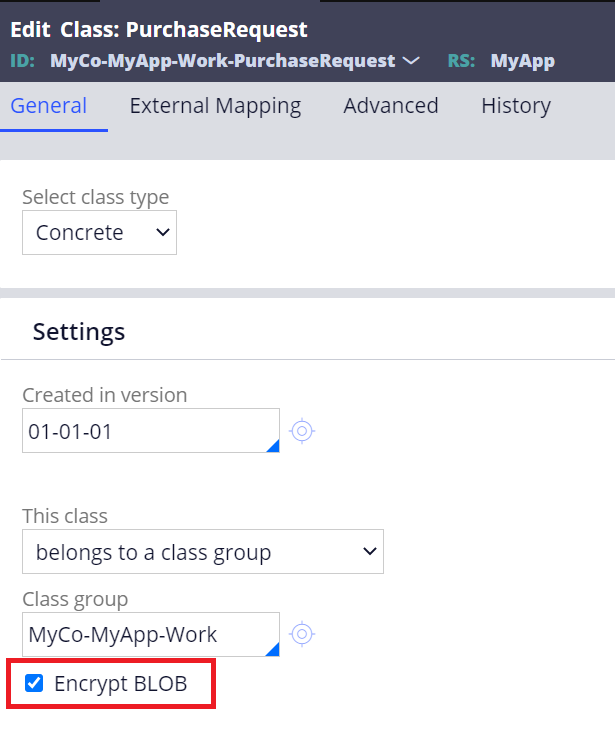
How do we know if Blob encryption is really working? It is not possible to tell from clipboard or XML, because once you do Obj-Open the instance, data is already decrypted. Personally I use UDF from DBMS as below - UDF is not allowed against encrypted Blob table, and you will face below error:
”The DirectStreamReader UDF cannot read from encrypted BLOBs”
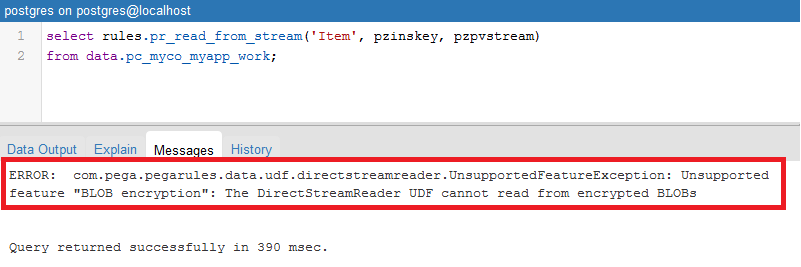
2-2-2. Property encryption
2-2-1. TextEncrypted property (deprecated)
1. Create a "TextEncrypted" property.
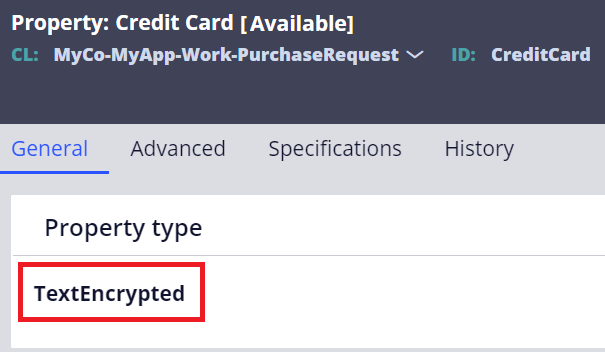
2. TextEncrypted property always require Access When rule.
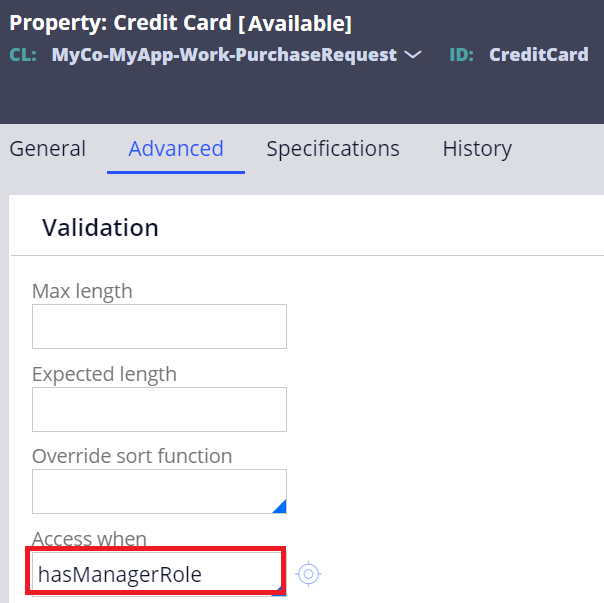
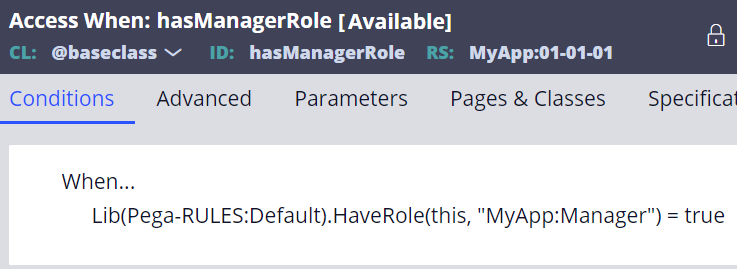
2-2-2. Text + Access Control Policy (recommended)
1. Create a regular "Text" property.
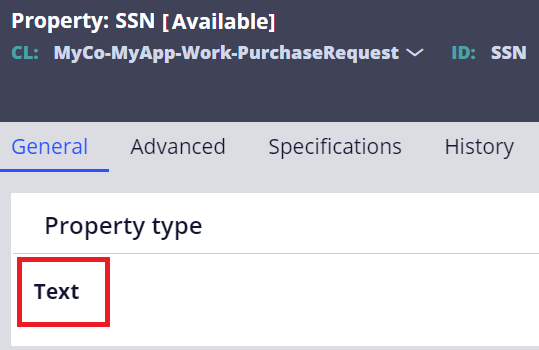
2. Create an Access Control Policy rule with "PropertyEncrypt" action. Add the property in the list.
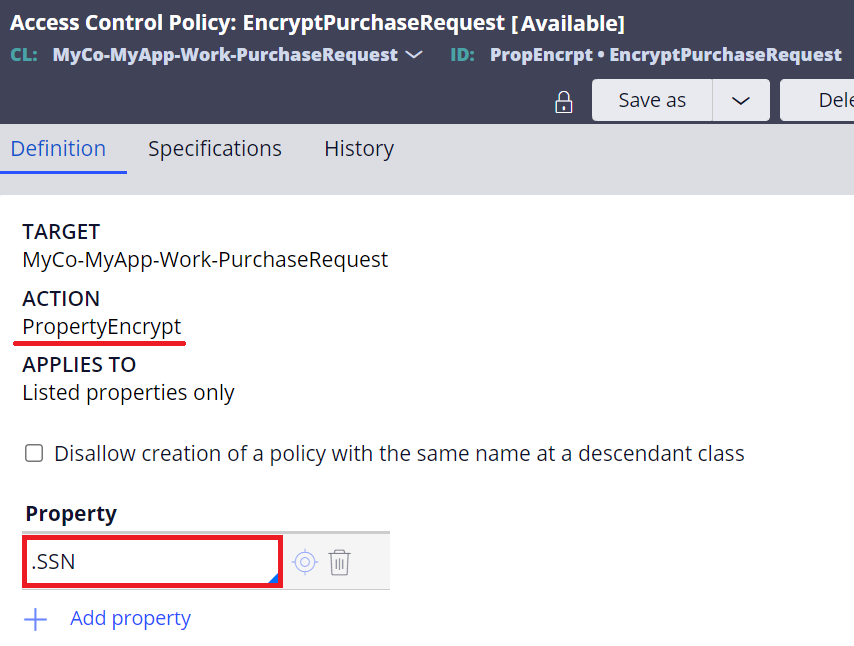
* "Password" property
When we talk about property encryption, "Password" property may also be brought up for discussion. Some people may be confused, but this Password property is not "encryption" but "hashing". Hashing, is a one-way process; after a password has been hashed, it can never be reverted to its original text, while encryption is a two-way process and can be decrypted with a proper key. The Password type requires no advanced configuration or Java skills to set up. This is only used for password purpose, where only the person can validate it by typing it. The display of a value of a Password property is asterisk, for all users, in all situations. Defaulted hashing algorithm used to be MD5 but beginning with Pega 7.2.2, the stronger salted BCrypt became the default. If desired, you can change it from MD5, SHA-1, SHA-256, SHA-512, and BCrypt using Dynamic System Settings.
Please see attached How-To documentation for detailed steps:
- Platform cipher
- Custom cipher
- Blob encryption
- Property encryption
- TextEncrypted property
- Text + Access Control Policy
Thanks,
